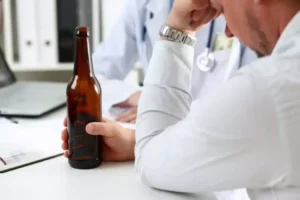Relapse prevention PMC

Relapse poses a fundamental barrier to the treatment of addictive behaviors by representing the modal outcome of behavior change efforts [1-3]. For instance, twelve-month relapse rates following alcohol or tobacco cessation attempts generally range from 80-95% [1,4] and evidence suggests comparable relapse trajectories across various classes of substance use [1,5,6]. Preventing relapse or minimizing its extent is therefore a prerequisite for any attempt to facilitate successful, long-term changes in addictive behaviors.

Continued empirical evaluation of the RP model
The RP model also incorporates numerous specific and global intervention strategies that allow therapist and client to address each step of the relapse process. Specific interventions include identifying specific high-risk situations for each client and enhancing the client’s skills for coping with those situations, increasing the client’s self-efficacy, eliminating myths regarding alcohol’s effects, managing lapses, and restructuring the client’s perceptions of the relapse process. Global strategies comprise balancing the client’s lifestyle and helping him or her develop positive addictions, employing stimulus control techniques https://ecosoberhouse.com/ and urge-management techniques, and developing relapse road maps. A number of studies have examined psychosocial risk reduction interventions for individuals with high-risk drug use, especially people who inject drugs. In contrast to the holistic approach of harm reduction psychotherapy, risk reduction interventions are generally designed to target specific HIV risk behaviors (e.g., injection or sexual risk behaviors) without directly addressing mechanisms of SUD, and thus are quite limited in scope. However, these interventions also typically lack an abstinence focus and sometimes result in reductions in drug use.
- Treatment in this component involves describing the AVE, and working with the client to learn alternative coping skills for when a lapse occurs, such that a relapse is prevented.
- Additionally, individuals may engage in cognitive distortions or negative self-talk, such as believing that the relapse is evidence of personal weakness.
- The RP model proposes that at the cessation of a habit, a client feels self-efficacious with regard to the unwanted behaviour and that this perception of self-efficacy stems from learned and practiced skills3.
- For example, it has been shown that self-efficacy for abstinence can be manipulated [137].
- A basic assumption is that relapse events are immediately preceded by a high-risk situation, broadly defined as any context that confers vulnerability for engaging in the target behavior.
- Full-text articles were independently evaluated for inclusion and discrepancies resolved through discussion with the third author.
- Rather than labeling oneself as a failure, weak, or a loser, recognizing the effort and progress made before the lapse can provide a more balanced perspective.
Relapse prevention for addictive behaviors
Other studies have similarly found that relationships between daily events and/or mood and drinking can vary based on intraindividual or situational factors [73], suggesting dynamic interplay between these influences. Self-efficacy (SE), the perceived ability to enact a given behavior in a specified abstinence violation effect context [26], is a principal determinant of health behavior according to social-cognitive theories. Although SE is proposed as a fluctuating and dynamic construct [26], most studies rely on static measures of SE, preventing evaluation of within-person changes over time or contexts [43].
Models of nonabstinence psychosocial treatment for SUD
Given the rapid growth in this area, we allocate a portion of this review to discussing initial evidence for genetic associations with relapse. Specifically, we focus on recent, representative findings from studies evaluating candidate single nucleotide polymorphisms (SNPs) as moderators of response to substance use interventions. It is important to note that these studies were not designed to evaluate specific components of the RP model, nor do these studies explicitly espouse the RP model.
Ideally, assessments of coping, interpersonal stress, self-efficacy, craving, mood, and other proximal factors could be collected multiple times per day over the course of several months, and combined with a thorough pre-treatment assessment battery of distal risk factors. Future research with a data set that includes multiple measures of risk factors over multiple days could also take advantage of innovative modeling tools that were designed for estimating nonlinear time-varying dynamics [125]. In addition to these areas, which already have initial empirical data, we predict that we could learn significantly more about the relapse process using experimental manipulation to test specific aspects of the cognitive-behavioral model of relapse. For example, it has been shown that self-efficacy for abstinence can be manipulated [137]. Thus, one could test whether increasing self-efficacy in an experimental design is related to better treatment outcomes. Similarly, self-regulation ability, outcome expectancies, and the abstinence violation effect could all be experimentally manipulated, which could eventually lead to further refinements of RP strategies.
- Temptations neither provoked an AVE nor enhanced self-efficacy in either lapsers or maintainers.
- Twenty-one of the 27 studies were RCTs/quasi-experiments; five were nonrandomized and one was purely economic.
- One study found that momentary coping reduced urges among smokers, suggesting a possible mechanism [76].
Relapse has been variously defined, depending on theoretical orientation, treatment goals, cultural context, and target substance (Miller, 1996; White, 2007). It is, however, most commonly used to refer to a resumption of substance-use behavior after a period of abstinence from substances (Miller, 1996). The term relapse may be used to describe a prolonged return to substance use, whereas lapsemay be used to describe discrete,… Two publications, Cognitive Behavioral Coping Skills Training for Alcohol Dependence (Kadden et al., 1994; Monti, Kadden, Rohsenow, Cooney, & Abrams, 2002) and Cognitive Behavioral Therapy for Cocaine Addiction (Carroll, 1998), are based on the RP model and techniques.
- Her work focuses on implicit (i.e. nonconscious or automatic) cognitive processes that contribute to the development and maintenance of maladaptive behavior and psychopathology.
- John’s goal is to monitor every department to ensure proper policies and procedures are in place and client care is carried out effortlessly.
- Recent reviews provide a convincing rationale for the putative role of implicit processes in addictive behaviors and relapse [54,56,57].
- Encouragement and understanding from friends, family, or support groups can help individuals overcome the negative emotional aftermath of the AVE.
Medical Director, Board Certified in Addiction Medicine

These individuals also experience negative emotions similar to those experienced by the abstinence violators and may also drink more to cope with these negative emotions. In a similar fashion, the nature of these attributions determines whether the violation will lead to full-blown relapse. J.F.K. has received funding from the US National Institutes of Health and the US Veterans Health Administration to conduct research into AUDs, comorbidities, treatment response and mechanisms of behavior change in AA and Self-Management and Recovery Training (SMART). Has received funding from the US National Institutes of Health and US Veterans Health Administration to evaluate a range of treatment and mutual-help organizations focused on alcohol and other drugs. If people with AUD are opposed to attending AA, despite the strong evidence for its potential to aid recovery, clinicians might consider linkage to alternative mutual-help organizations as they may confer benefits at similar levels of engagement.

About 13 studies included a bioassay (e.g. breathalyzer, saliva, urinalysis and blood); 13 did not. Due to the time during which data collection was conducted for the included studies, newer bioassays such as phosphatidylethanol (PetH) and ethyl glucuronide (EtG) were not available. John’s key responsibilities include maintaining the day-to-day operations from both a clinical and housing perspective. John’s goal is to monitor every department to ensure proper policies and procedures are in place and client care is carried out effortlessly. John joined Amethyst as a behavioral health technician where he quickly developed strong personal relationships with the clients through support and guidance.

Strengthening coping skills is a goal of virtually all cognitive-behavioral interventions for substance use [75]. One study [76] found that momentary coping differentiated smoking lapses from temptations, such that coping responses were reported in 91% of successful resists vs. 24% of lapses. Shiffman and colleagues [68] found that restorative coping following a smoking lapse decreased the likelihood of a second lapse the same day. One study found that momentary coping reduced urges among smokers, suggesting a possible mechanism [76]. Some studies find that the number of coping responses is more predictive of lapses than the specific type of coping used [76,77].
